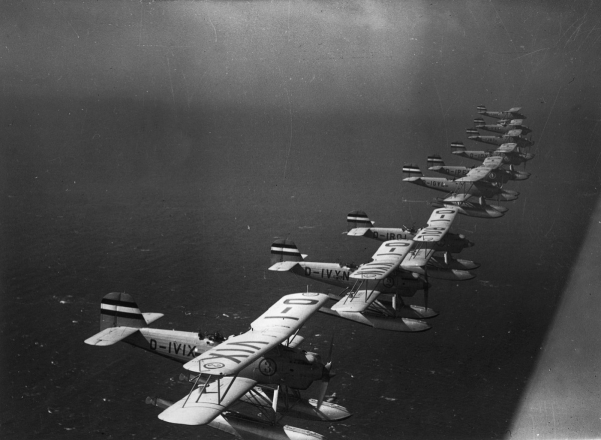
One of the last of the many floatplanes designed by Ernst Heinkel was the He 60, a two-seat biplane powered by a BMW vee engine. This was intended for catapult operations from the decks of the larger German warships, and first flew in 1933 in prototype form. The 492kW (660hp) BMW V1 engine was subsequently replaced in the second He 60B prototype by a 559kW (750hp) version of the same engine, but this offered no significant improvement and was not adopted for subsequent aircraft. The third He 60c prototype had catapult launching equipment and underwent a series of trials that confirmed its suitability for operational use.
The first production He 60B aircraft entered service with training units in 1933 and as the programme of rebuilding Germany’s navy accelerated, the type was selected for service aboard German battle cruisers and cruisers. In 1934 an improved version (He 60C) was introduced. The aircraft saw extensive service in the Spanish Civil War, where it performed well. By the time that war had broken out in Europe at the beginning of September 1939, however, the He 60 was fast becoming obsolete and it was soon relegated to training duties only, although German maritime reconnaissance units based in Greece and Crete continued to operate the He 60 until 1943.
Specifications
- Manufacturer
- Ernst Heinkel A.G
- Type
- Reconnaissance Seaplane
- Length
- 11.48m (37ft 8in)
- Span
- 13.5m (44ft 3in)
- Height
- 5.3m (14ft 5in)
- Maximum Speed
- 225km/h (140mph)
- Service Ceiling
- 5000m (16,400ft)
- Range
- 720km (447 miles)
- Crew
- Two
- Powerplant
- 1 x BMW VI 6.OZU
- Armament
- 2 x MG
- Bomb Load
- None
- First Flight
- March 1933
- Initial Climb
- 312m (1023ft) per min
- Weight (empty)
- 2735kg (6018lb)
- Weight (loaded)
- 3407kg (7495lb)
